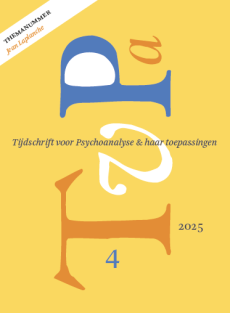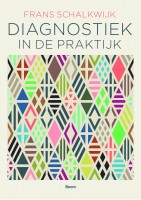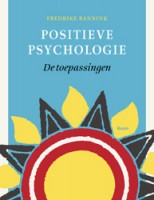Psychoanalyse en emoties: een aanzet tot discussie
Summary
Translation of the daily practice of psychoanalysis into metapsychological theory and vice versa, is often problematic. The need for a coherent theory of emotion in order to bridge the gap between the two levels of psychoanalytic discussion is urged. First, the three component parts of an emotion are described: feelings, long disregarded cognitions and physiological arousal. Metapsychological implications for the classical drive model and the concept of character are also discussed. Finally, clinical implications are illustrated by two vignettes.
Literatuur
- Basch, M.F. (1976), The concept of affect: a reexamination. Journal of the American Psychoanalytic Association 24, p. 759-777.
- Basch, M.F. (1991), The significance of a theory of affect for psychoanalytic technique. Journal of the American Psychoanalytic Association 39, p. 291-301.
- Beijk, J. (1982), De herontdekking van de psychoanalytische denkbeelden in de cognitieve psychologie. Tijdschrift voor Psychotherapie 8, p. 203-216.
- Beijk, J. (1985), De verhouding academische psychologie – psychoanalyse; de geschiedenis van een ambivalente relatie. Psychoanalytisch Forum 3, p. 6-24.
- Blécourt, A. de (1996), Reactie op ‘Gelezen’ van A. Ladan. Mededelingenblad van de Nederlandse Vereniging voor Psychoanalyse 11 (6), p. 23-27.
- Blum, H.P. (1991), Affect theory and the theory of technique. Journal of the American Psychoanalytic Association 39, p. 265-289.
- Brenner, C. (1982), The mind in conflict. International Universities Press, New York.
- Brenner, C. (1994), The mind as conflict and compromise formation. Journal of Clinical Psychoanalysis 3, p. 473-488.
- Brown, D. (1993), Affective development, psychopathology, and adaptation. In: S.L. Ablon, D. Brown, E.J. Khantzian, e.a. (eds), Human Feelings. Explorations in affect development and meaning. The Analytic Press, Hillsdale/London, p. 5-66.
- Damasio, A. (1994), Descartes’ error: emotion. Reason and the human brain. Grosset/Putnam, New York.
- Ellis, A. (1962), Reason and emotion in psychotherapy. Lyle Steward, New York.
- Freud, S. (1926), Remming, symptoom en angst. Nederlandse Editie: Psychoanalytische Theorie 3. Boom, Meppel/Amsterdam, p 123
- Frijda, N.H. (1988), De emoties. Bert Bakker, Amsterdam. (Oorspronkelijk The emotions, 1986).
- Hofer, M.A. (1990), Early symbiotic processes: hard evidence from a soft place. In: R.A. Glick & S. Bone (eds), Pleasure beyond the pleasure principle. Yale University Press, New Haven, p. 55-78.
- Kernberg, O. (1990), Hatred as pleasure. In: R.A. Glick & S. Bone (eds), Pleasure beyond the pleasure principle. Yale University Press, New Haven, p. 189-197.
- Klein, M. (1975), The Writings of Melanie Klein. Volumes 1 – 4, editor: R. Money-Kyrle. Hogarth Press, London.
- Korrelboom, C.W. & J.H.B. Kernkamp (1993). Gedragstherapie. Coutinho, Muiderberg.
- Kris, A.O. (1985), Resistance in convergent and in divergent conflicts. Psychoanalytic Quarterly 54, p. 537-568
- Lacan, J. (1977), Ecrits. (Translation: A. Sheridan). Norton, New York.
- Ladan, A. (1996), Gelezen. Mededelingenblad van de Nederlandse Vereniging voor Psychoanalyse 11 (2), p. 24-29.
- Lazarus, R.S. (1982), Thoughts on the relation between emotion and cognition. American Psychologist, p. 1019-1024.
- Leeuwen, W.F. van (1973), Het psychoanalytisch minimum. In: A.P.Cassee, P.E. Boeke & J.T. Barendregt (red.): Klinische Psychologie in Nederland, deel 1. Van Loghum Slaterus, Deventer, p. 56-79.
- Leeuwen, W.F. van (1987), Hetvanzelfzwijgende: gedachten over gevoelens. Psychoanalytisch Forum 5, p. 5-46.
- Modell, A.H. (1993), The private Self. Harvard University Press, Cambridge/London.
- Nathanson, D.L. (1990), Project for the study of emotion. In: R.A. Glick & S. Bone (eds), Pleasure beyond the pleasure principle. Yale University Press, New Haven, p. 81-110.
- Rycroft, C. (1968), A critical dictionary of psychoanalysis. Penguin Books, London.
- Sandler, J. (1985a), Towards a reconsideration of the psychoanalytic theory of motivation. Bulletin Anna Freud Centre 8: p. 223-244.
- Sandler, J. (1985b), The analysis of defence. International Universities Press, New York.
- Sandler, J. (1988), Psychoanalytic technique and ‘Analysis terminable and interminable’. International Journal of Psycho-Analysis 69, p. 335-346.
- Schafer, R. (1976), A new language for psychoanalysis. Yale University Press, New Haven.
- Shrevin, H., J. Bond, L. Brakel, e.a. (eds) (1996), Conscious and unconscious processes. Psycho-dynamic, cognitive and neurophysiological convergences. The Guilford Press, New York, London.
- Spezzano, C. (1993), Affect in psychoanalysis. A clinical synthesis. The Analytic Press, Hillsdale.
- Stein, R. (1991), Psychoanalytic theories of affect. Praeger, New York.
- Stern, D. (1985), The interpersonal world of the infant. Basic Books, New York.
- Stern, D. (1990), Joy and satisfaction in infancy. In: R.A. Glick & S. Bone (eds), Pleasure beyond the pleasure principle. Yale University Press, New Haven, p. 13-25.
- Tomkins, S.S. (1962), Affect, imagery, consciousness. Volume 1. Springer, New York.
- Tomkins, S.S. (1963), Affect, imagery, consciousness. Volume 2. Springer, New York.
- Weinshell, E.M. (1970), Some psychoanalytic considerations on moods. International Journal of Psycho-Analysis 52, p. 313-320.
- Winnicott, D.W. (1965), The maturational process and the facilitating environment. International Universities Press, New York.
 © 2009-2025 Uitgeverij Boom Amsterdam
© 2009-2025 Uitgeverij Boom Amsterdam
ISSN 1382-516x
De artikelen uit de (online)tijdschriften van Uitgeverij Boom zijn auteursrechtelijk beschermd. U kunt er natuurlijk uit citeren (voorzien van een bronvermelding) maar voor reproductie in welke vorm dan ook moet toestemming aan de uitgever worden gevraagd:
Behoudens de in of krachtens de Auteurswet van 1912 gestelde uitzonderingen mag niets uit deze uitgave worden verveelvoudigd, opgeslagen in een geautomatiseerd gegevensbestand, of openbaar gemaakt, in enige vorm of op enige wijze, hetzij elektronisch, mechanisch door fotokopieën, opnamen of enig andere manier, zonder voorafgaande schriftelijke toestemming van de uitgever.
Voor zover het maken van kopieën uit deze uitgave is toegestaan op grond van artikelen 16h t/m 16m Auteurswet 1912 jo. Besluit van 27 november 2002, Stb 575, dient men de daarvoor wettelijk verschuldigde vergoeding te voldoen aan de Stichting Reprorecht te Hoofddorp (postbus 3060, 2130 KB, www.reprorecht.nl) of contact op te nemen met de uitgever voor het treffen van een rechtstreekse regeling in de zin van art. 16l, vijfde lid, Auteurswet 1912.
Voor het overnemen van gedeelte(n) uit deze uitgave in bloemlezingen, readers en andere compilatiewerken (artikel 16, Auteurswet 1912) kan men zich wenden tot de Stichting PRO (Stichting Publicatie- en Reproductierechten, postbus 3060, 2130 KB Hoofddorp, www.cedar.nl/pro).
No part of this book may be reproduced in any way whatsoever without the written permission of the publisher.
Nieuwsbrief Boom Psychologie
Meld u nu aan en ontvang maandelijks de Boom Psychologie nieuwsbrief met aantrekkelijke aanbiedingen en de nieuwe uitgaven.
Aanmelden


